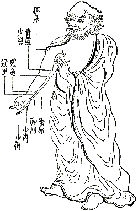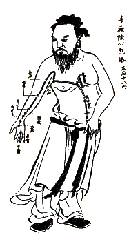An Introduction to Acupuncture

Acupuncture is an important part of Traditional Chinese Medicine, which has been developed over several thousand years. In ancient Chinese literature there are many legends about the origin of acupuncture such as Fu Xi's creation of therapeutic techniques using stone needles and Huang Di's invention of acupuncture. The bronze figure shown on the right is a human model indicating all the acupuncture points. It was cast in 1443 A.D. during the Ming Dynasty. In contrast to the long history of acupuncture practice in China and other Asian countries, it is only in the last decade that Americans have begun to realize the efficacy of the ancient therapy. Acupuncture has gained much attention in recent years. It is estimated that about one million Americans spend $500 million a year on acupuncture for complains ranging from gallstones to migraines to low-back pain. In 1997, the National Institute of Health (NIH) has assembled a panel of experts in a scientific court known officially as a consensus conference to evaluate the scientific basis of acupuncture treatment. The panel was unexpectedly upbeat. They found acupuncture effective in treating painful disorders of the muscle and skeletal systems, such as fibromyalgia and tennis elbow, and a number of other conditions. In its November 17, 1997 issue, Time magazine contained an article entitled "Acupuncture Works" describing the NIH panel endorsement. The following are the conclusions of the panel.



Clearly Effective in Treating:
May Be Effective in Treating:
Uncertain Effectiveness in Treating: